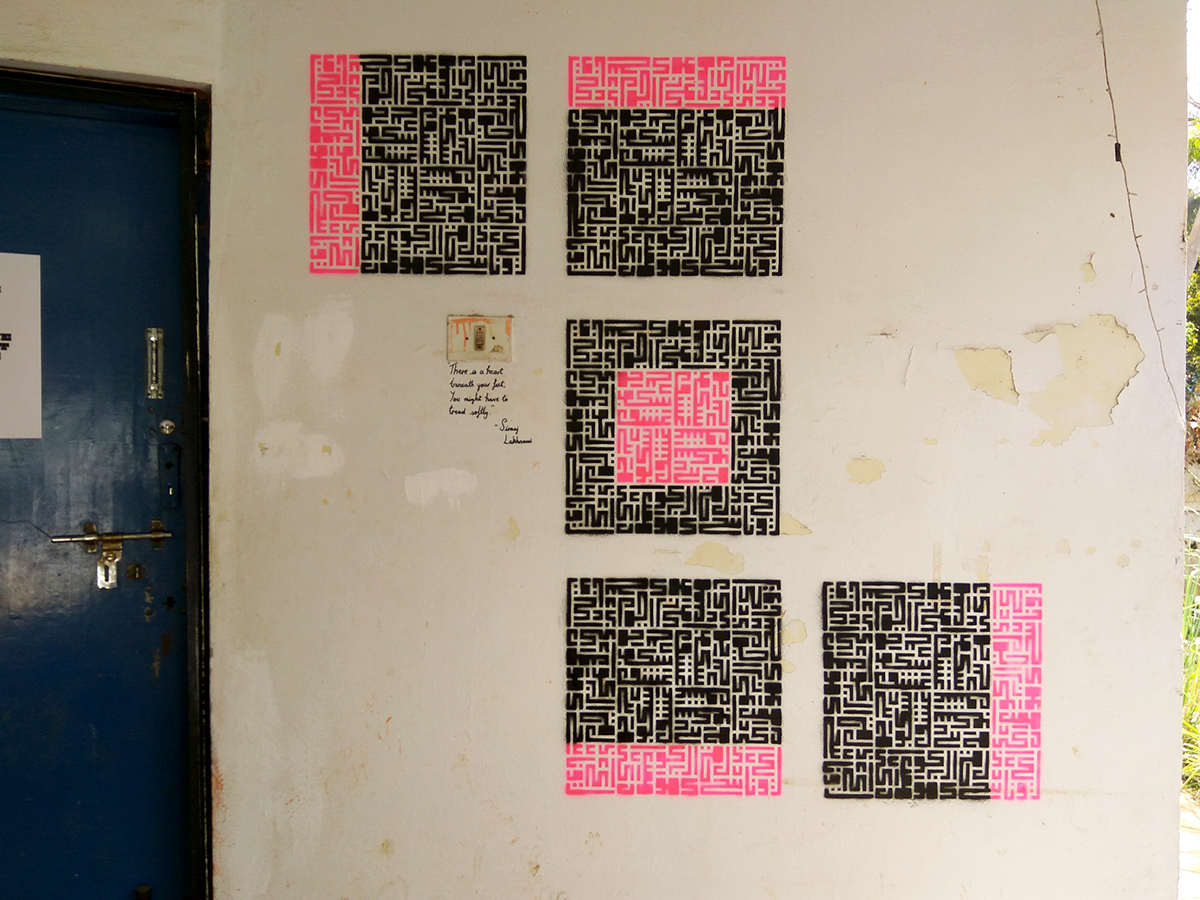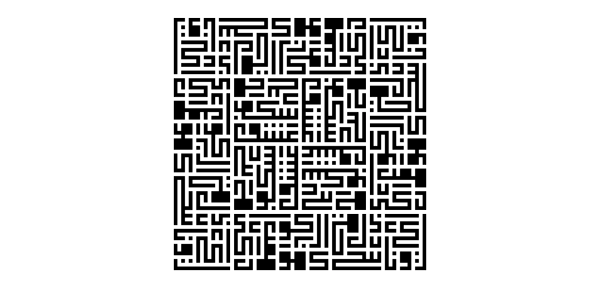
Urban Square Kufic Graffiti
Design Fabric started a trend for reviving the Urdu language called #PehleAap. It started off with Zeenat Kulavoor in Mumbai, painting the first mural and this was later followed with a reply by a Pakistani graffiti artist, Sanki King, who painted another mural in Islamabad. This was the start of the movement and the goal was to find an artistic purpose to break down any barriers that existed between people through the use of language at a physical space. A few months back, a call was put out for any artists who wished to take part in this movement by making a mural at a public physical space, which had a message of peace and harmony and could be sought as a beacon for unifying communities. I, and my fellow classmate, Mohnish Tejani, decided to try our hand at it.
We went through a lot of graffiti artists work, especially Arabic graffiti since it has some interesting styles and scripts present, and found a lot of artists use a freehand style for making their letters. After considerable thought we decided not to go freehand for the end results were not looking good and it was coming out rather messy as opposed to an aesthetically pleasing image.
In the meantime, I was researching various scripts in the Arabic and Urdu language for some insight as to how we could progress with our style and was most intrigued by the Square Kufic style. It could be called a mono-spaced style and follows some very strict mathematical rules and guidelines for the construction and arrangements of words and letters. Also given the fact that there was no “Urdu Kufic” style, we had to improvise our letters accordingly as the Arabic and Urdu scripts have considerable differences, especially in terms of letter connections and diacritical marks. We were slightly perplexed as to whether to stay within the rules or move out of them. Eventually we decided on a combination of both and thus felt it reflected that the society and state, need to have certain rules in order to function, but at the same time certain rules need to be re-looked to seek out new ways of looking at life.

Fig1.1 - Some examples of letter transformations within the Square Kufic calligraphy style.

Fig1.2 - Siraj Lakhnawi's couplet fitted inside a rectangle
Thus our overall design follows the rules of proportions but we have decided to fill the counters of certain alphabets and also removed the surrounding border which is often present in a number of Square Kufic artworks. Using spray paints we are adding a certain expressiveness with our medium in a global context, which is quite important when it comes to spreading important messages about unity and harmony among communities. The famous proverb of Marshall Mcluhan, the medium is the message couldn't have been more relevant when we were working.
The rough design was initially done on a grid paper and then was digitized in Adobe Illustrator. A printout was taken on an A1 sheet, after scaling up the artwork. Subsequently we stencil cut the piece, with the help of our colleagues from college, in order for it to be spray painted on a wall.
Message - We chose a couplet from Siraj Lakhnawi, the famous poet (early 20th century) whose poetry reflected shades of modernity within them, and decided that this particular couplet spoke of a very personal way of looking at life and eventually sought people to self-reflect on themselves.
“Aap ke paun kay neechay dil hain,
Ek zara aapko zehmat hogi.”
It roughly translates to – There is a heart beneath your feet, you migh have to tread softly.” Translating poetry is quite a difficult task and the essence of this couplet rests on the word—zehmat— for which there is hardly an equivalent counterpart in English.
Another line that we decided to add, on our own, to complete the couplet and the design is –
“Ishq hi sukoon hai”
Which roughly translates to – “True peace is love”. We decided not to write this translation down on the wall out of respect for the poet for it would seem that we were equating our experience with his.

Fig1.3 - The final design which was to be stencil cut and spray painted on a wall.
Work In Progress Pictures











Final Artwork

Fig1.4 - The completed piece. Rather than just spray paint the whole design, we decided to give some visual movement with colour across the wall.


Parting GIF for our viewers. :)
A shout out to our undergraduate students at Srishti, who helped us with the planning phase of our design. Also a special thank you to the Partly Purple art gallery, for letting us spray paint our stencil on the wall. And last but not the least, thank you to Design Fabric, Zeenat and Abdullah for giving us the opportunity to be a part of the #PehleAap movement, and helping us take part in the initiative to bring the Urdu language back to into the mainstream.




